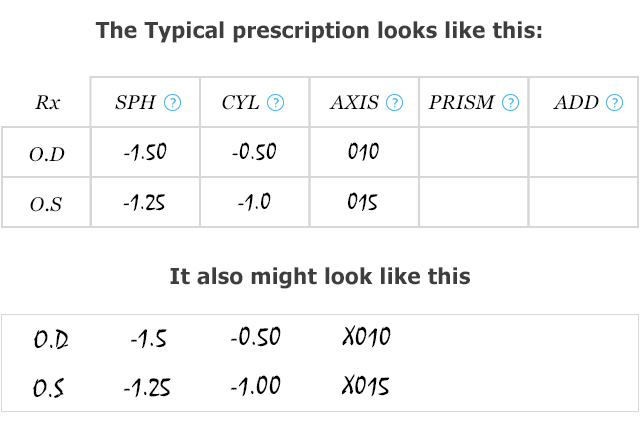While there might be some minor variations between different eye prescription forms, the generic doctor’s RX note will probably look very much like this :

The key to reading your eyeglasses prescription, whether you have nearsightedness, farsightedness, astigmatism or anything else, is knowing what OD and OS stand for...
Sometimes appearing as O.D. and O.S. (oculus dexter and oculus sinister), which are abbreviations in Latin for right eye (OD) and left eye (OS). Some doctors may use O.U. which means both eyes, or RE and LE for right eye and left eye respectively.
There are other abbreviations in your eye prescription. Here is what each of them means:
-
Sphere (SPH): Measured in diopters, the number under this header refers to the lens power necessary for each eye. A minus (-) is used to correct nearsightedness. A plus (+) sign next to the number refers to farsightedness correction.
-
Cylinder (CYL): The lens power (also diopters) used to correct astigmatism. If you have no astigmatism or very slight one, nothing will appear under this column. Just like with Sphere, minus is used to indicate lens power for nearsighted astigmatism, plus is for farsighted astigmatism.
-
Axis (Ax): Like Cylinder, this only applies to astigmatism prescriptions. The numbers under this column refer to angle degrees (1 to 180) and not diopters. If your prescription includes Cylinder lens power, it must include Axis as well.
-
Add: Only used for multifocal (progressive/bifocal) lenses. It refers to the added magnifying power applied to the bottom of the lens in multifocal lenses. PAL is used in some cases by eye doctors when the addition for progressive lenses is different compared to bifocals.
-
Prism: Prism is used to correct double vision or vision displacement. The value on the prescription refers to the number of diopters applied in order to compensate for the image alignment issues.





